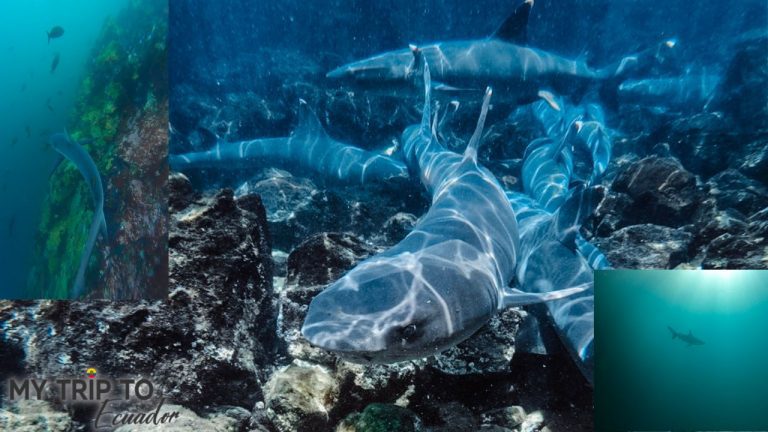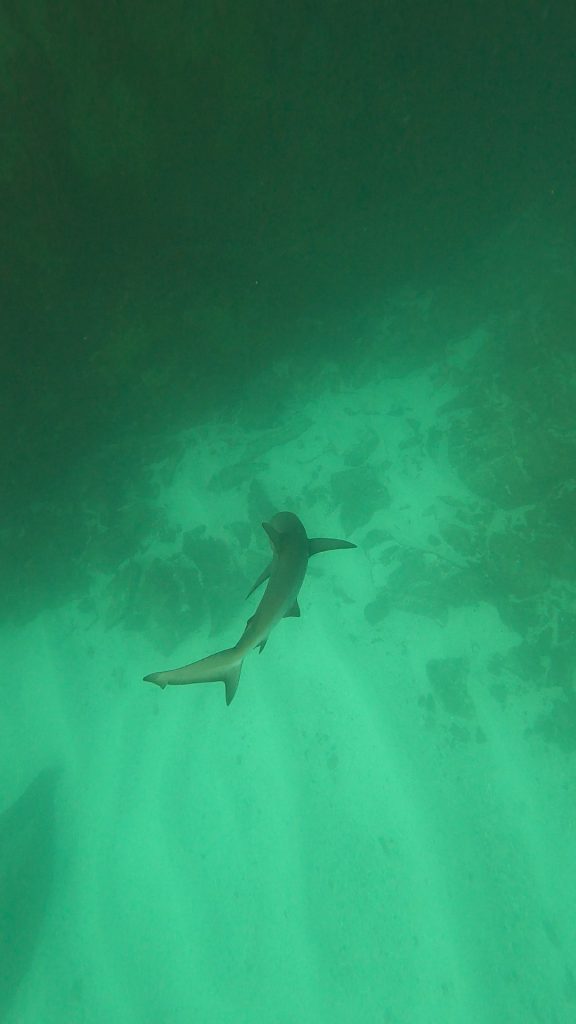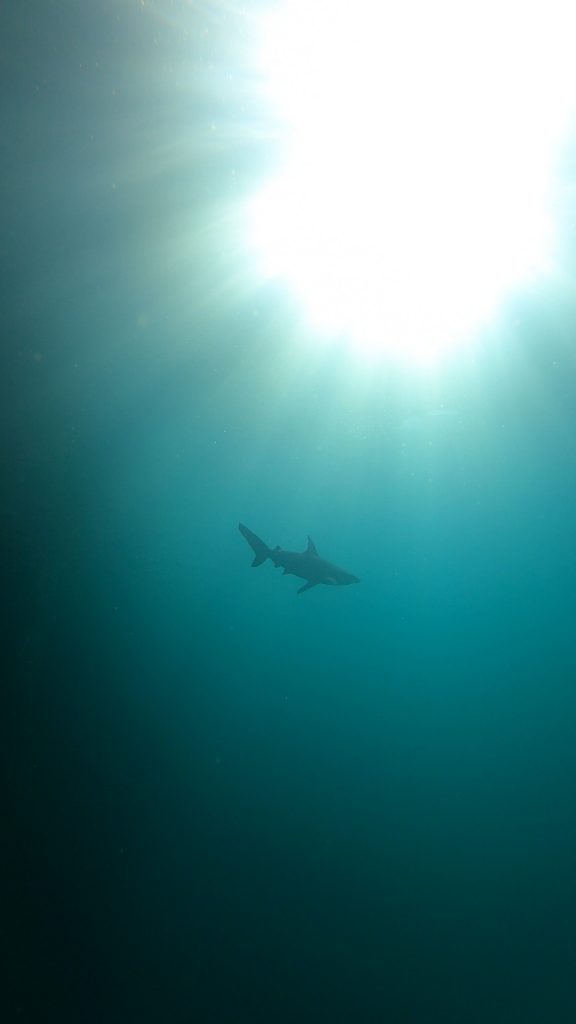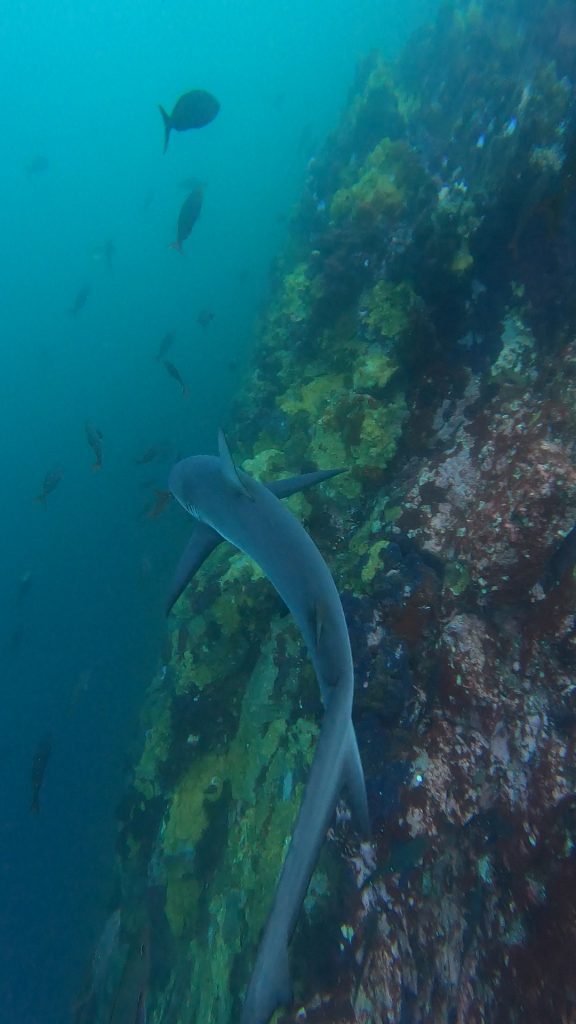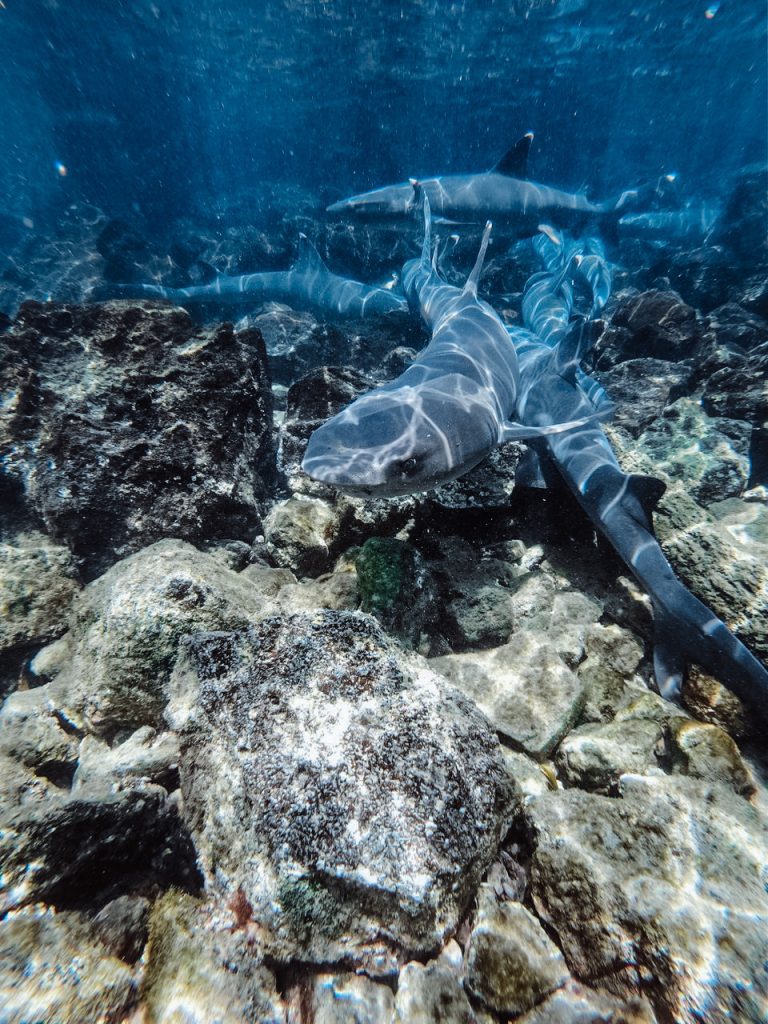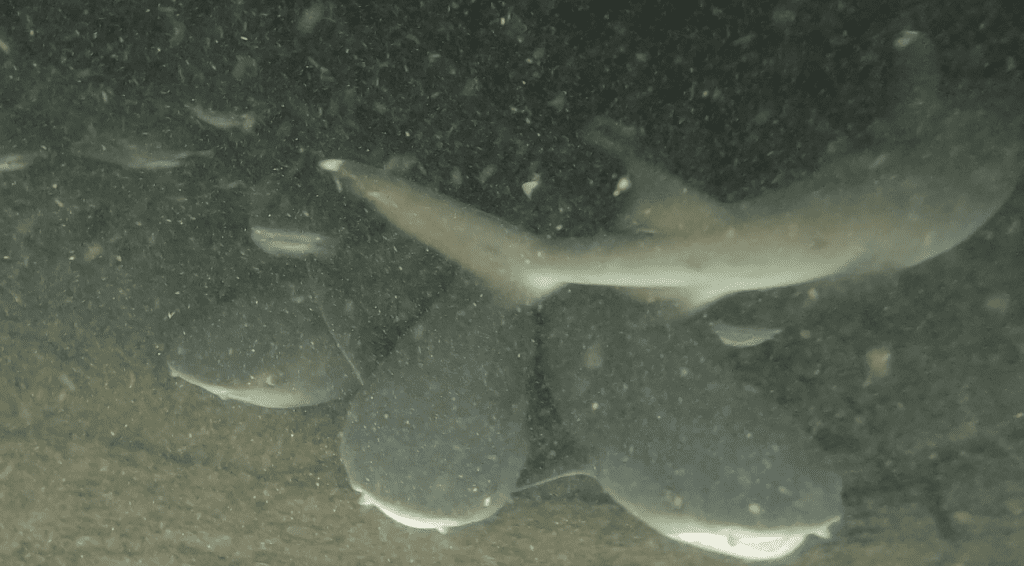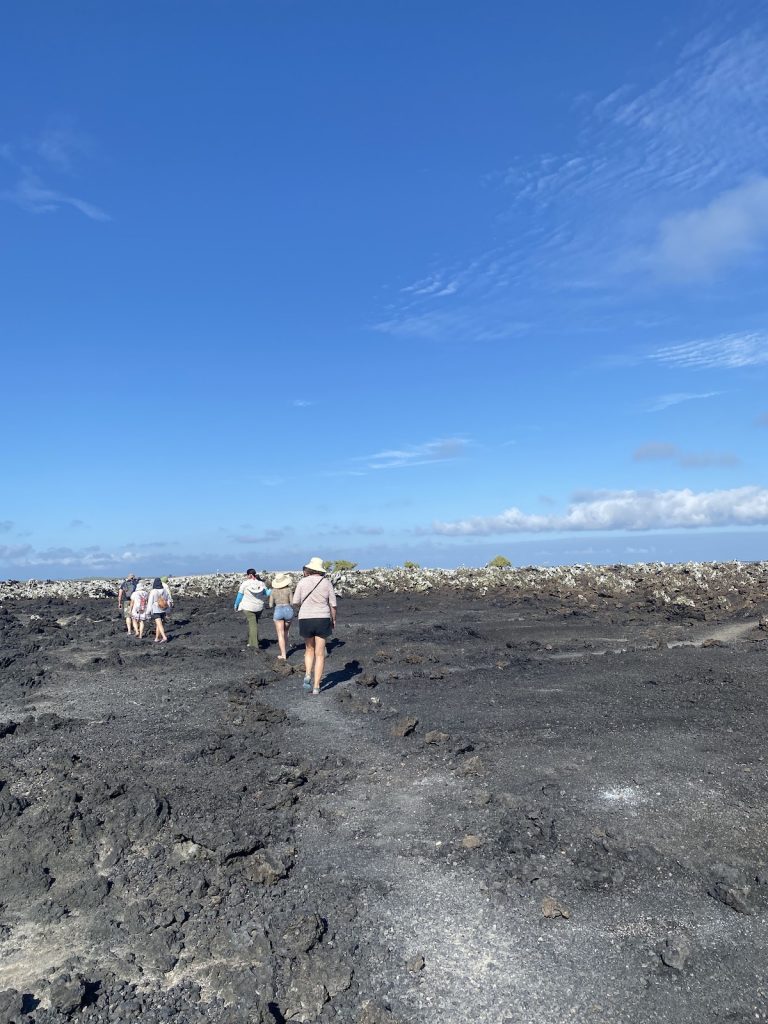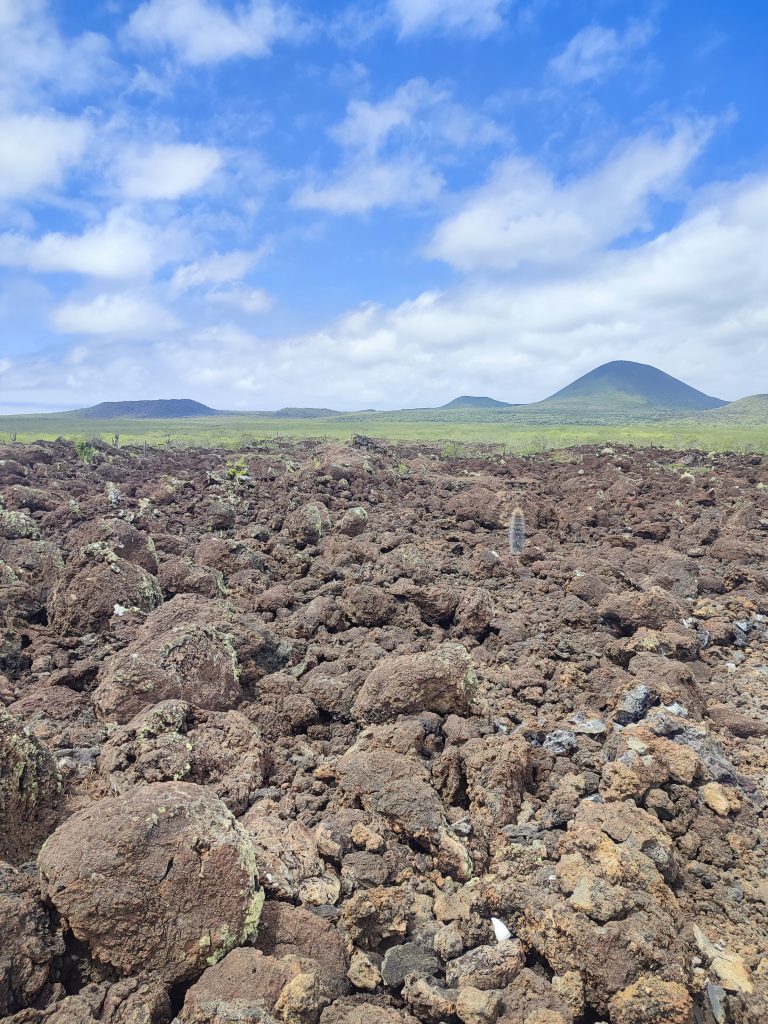The Galapagos Islands are renowned for their incredible biodiversity, and sharks are no exception. The unique meeting of cold ocean currents with warm tropical waters creates the perfect environment for a variety of shark species. When I traveled to the Galapagos, one of my goals was to see as many sharks as possible, and it did not disappoint!
Although 32 distinct species of sharks have been identified in the waters around the Galapagos, this doesn’t mean you’re in extreme danger. In fact, with proper precautions and expert guidance, snorkeling and diving with these majestic creatures is a safe and truly exhilarating experience.
Before we dive into the list of shark species you might encounter, let’s first address an important question: Are sharks in the Galapagos dangerous?
I remember feeling anxious about swimming with sharks before my Galapagos trip. Now I know – with the right guides and locations, it’s an incredibly safe and unforgettable experience. Get a FREE custom itinerary from local experts who’ll ensure you have the best (and safest) shark encounters possible. Your support helps this blog and local Ecuadorian communities!
Are Sharks in Galapagos Islands Dangerous?
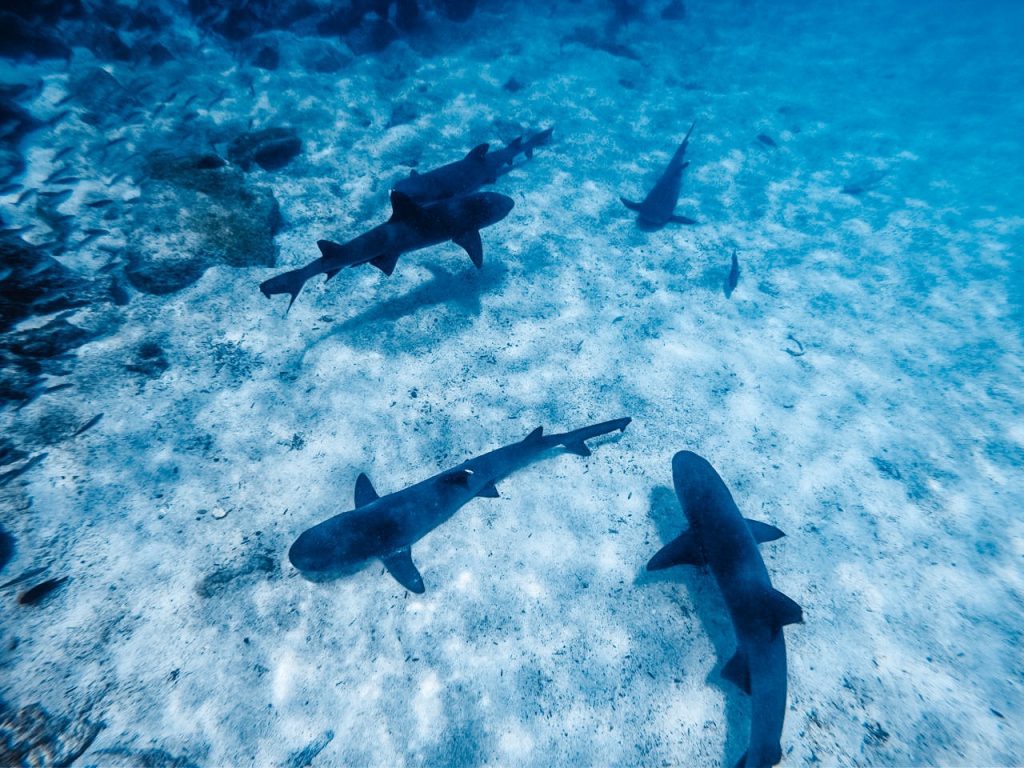
Recent news of a shark attack in the Galapagos has understandably caused concern among travelers. However, such incidents are extremely rare, and there have been no fatalities related to shark attacks in the waters around the Galapagos Islands. While it’s important to stay cautious, sharks are generally curious rather than aggressive, and they might come closer simply to check things out.
The key to safe interactions with sharks is giving them space and avoiding behaviors that could startle or upset them. If you’re snorkeling or diving, always go with a guide. A knowledgeable guide can assess the situation and ensure your safety, especially if a shark appears to feel uncomfortable. Be sure to follow their instructions and reminders closely to ensure a safe and enjoyable experience.
Galapagos Sharks
One of the most fascinating species in the Galapagos is the Galapagos Shark. As one of the most common shark species found in the waters around the archipelago, they are also the largest members of the Requiem Shark family. Despite their intimidating appearance and size, these sharks are generally not aggressive. Instead, they tend to show curiosity and mild interest in human presence.
According to the IUCN Red List, Galapagos sharks are classified as Least Concern, though their population trends remain unknown.
If you’re hoping to spot Galapagos sharks, your best chances are on a live-aboard Galapagos dive cruise or a dive day tour from Santa Cruz Island. While sightings aren’t guaranteed, we were fortunate enough to see a few during our dive tour—a thrilling experience that added to the excitement of the trip.
Most groups of Galapagos sharks are found near Darwin and Wolf Islands, in the far north of the archipelago. These remote islands are accessible only through specialized dive cruises, making them prime spots for encountering these impressive creatures. However, I was lucky enough to spot a Galapagos shark during the 360 Tour at San Cristobal—an exciting surprise, and a big chance for others to see them as well!
While Galapagos sharks can potentially pose a threat to humans, there has never been a deadly attack in the Galapagos. They are naturally curious but not usually hostile. It’s always smart to take precautions when diving with them, and following your guide’s instructions will help ensure a safe and memorable experience.
It’s crucial to watch for signs that a Galapagos shark may be feeling uneasy. If you notice their back arching, head lifting, or a zigzag swimming pattern, these are indicators that the shark might be getting upset. In such cases, it’s important to remain calm, give the shark plenty of space, and avoid any sudden movements. Most importantly, divers should respect their territory and treat these creatures with proper consideration, ensuring a safe and harmonious encounter for both the divers and the sharks.
Scalloped Hammerhead Sharks
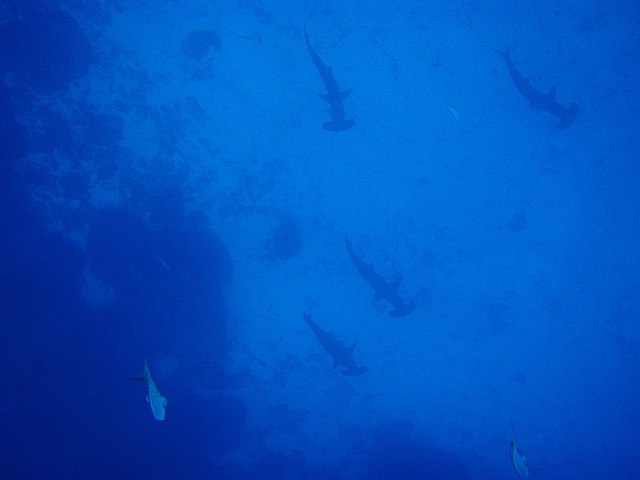
Hammerhead sharks are a fairly common sight in the Galapagos, with the most frequently spotted species being the scalloped hammerhead shark. What sets these sharks apart is their distinctive “hammer” shaped head, which features a scalloped front edge, making them even more unique. When I visited Kicker Rock, I had the chance to see them, though they were quite deep. For a closer look, scuba diving is ideal, but I still caught a glimpse while snorkeling from the surface.
These sharks have a sleek gray-bronze color, typically weigh between 80 to 100 kilograms, and can grow to about 2.5 to 3 meters in length. They tend to congregate along underwater cliffs, rocky banks, and coral reefs. The largest gatherings of scalloped hammerheads are often found near Wolf Island and Darwin Island.
During January, when the robust Humboldt Current is at its peak, large schools of scalloped hammerheads navigate the waters near Wolf, Darwin, and occasionally Kicker Rock. If you’re keen to spot younger scalloped hammerhead sharks, they can be found at Floreana’s Post Office Bay and Santa Cruz’s Black Turtle Cove—you’ll need to take the Floreana Island Tour for the best chances. We were lucky to enjoy an incredible sighting of these sharks during our tour at Floreana, making it one of the highlights of the trip!
Whale Sharks
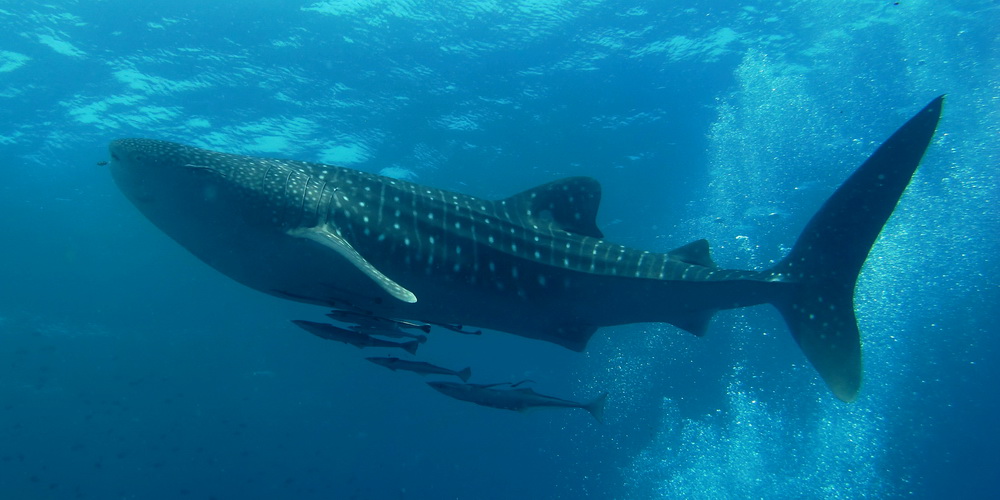
Whale sharks are truly captivating and awe-inspiring, and while I didn’t get the chance to see them during my snorkeling adventures in the Galapagos, they remain a bucket-list sight for many. Known as the largest fish in the world, these gentle giants can reach an astonishing length of up to 40 feet. Despite their massive size, whale sharks are incredibly docile and peaceful, earning them a reputation as one of the ocean’s most majestic creatures.
Divers who are lucky enough to encounter a whale shark often describe the experience as unparalleled. These enormous creatures glide gracefully through the water, their distinctive pattern of spots and stripes becoming more apparent as they swim past. The sheer size and tranquility of a whale shark in motion is a mesmerizing spectacle that leaves a lasting impression on those fortunate enough to witness it up close.
Finding the best spots and timing for shark encounters took me hours of research, and I still missed seeing whale sharks during my visit. Don’t make the same mistake – get a FREE itinerary from local experts who know exactly when and where to see each species. Your booking supports this blog and local Ecuadorian businesses!
Whitetip Reef Sharks
If you’re hoping to spot Galapagos reef sharks, some of the best locations include Gardner Bay, Turtle Island in Española, and Punta Cormorant in Floreana. Bartolomé and North Seymour islands are also popular spots for sightings.
We were lucky enough to witness these incredible sharks during our Pinzon Island tour and again during the Los Tuneles tour. It was a thrilling experience, and we made sure to capture the moment with a photo. Seeing these majestic creatures up close was truly unforgettable!
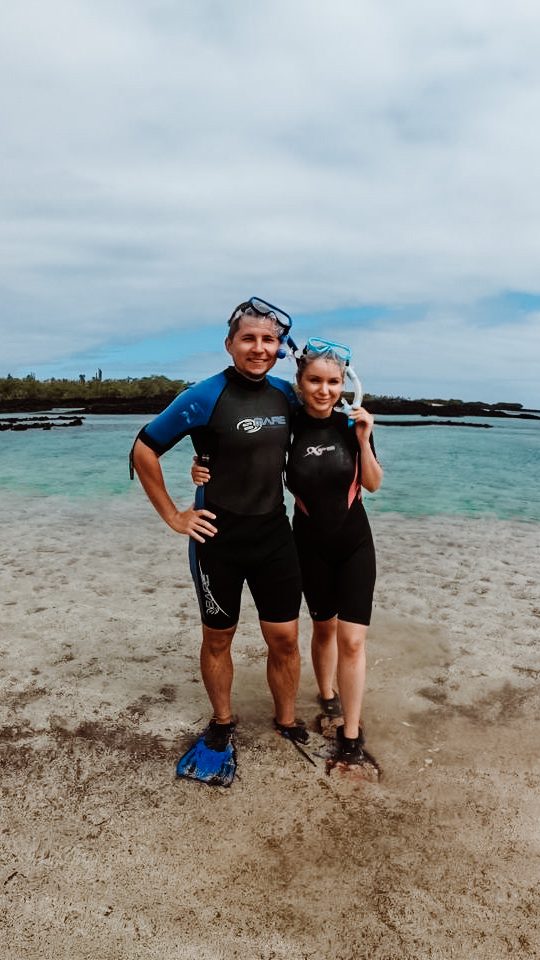
Planning trip to Galapagos Islands?
My wife and I spent two weeks on these magnificent islands, visited nearly every possible tour, and explored as much as we could. I shared all the important details in my comprehensive Galapagos Islands Travel Guide, where I cover everything you need to know about planning a trip to the Galapagos.
Galapagos Islands travel might surprise you with extra fees to enter the islands, the complicated logistics between islands, booking tours, and knowing which spots are free to explore and which ones are not. I’ve covered it all in this Galapagos Travel Guide.
Also, if you’re planning a trip to the Galapagos, make sure to use my link for discounted hotel prices via Booking.com. It really helps support my blog!
Conclusion
Sharks are abundant throughout the Galapagos Islands and are an integral part of the marine ecosystem. While they are a natural component of the environment, interactions with sharks should always be approached with care and respect.
Although shark attacks are extremely rare in the Galapagos and have never been fatal, it’s important to remember that sharks are naturally curious animals. They may approach humans, but it’s essential to give them space and avoid any actions that could startle or threaten them. Having a knowledgeable guide when snorkeling or diving is highly recommended to ensure safety and better understand shark behavior.
Encountering the diverse shark species in the Galapagos not only adds excitement to the experience but also deepens our understanding of the islands’ unique marine ecosystems. It emphasizes the importance of preserving these habitats and maintaining a respectful coexistence with these magnificent creatures.

